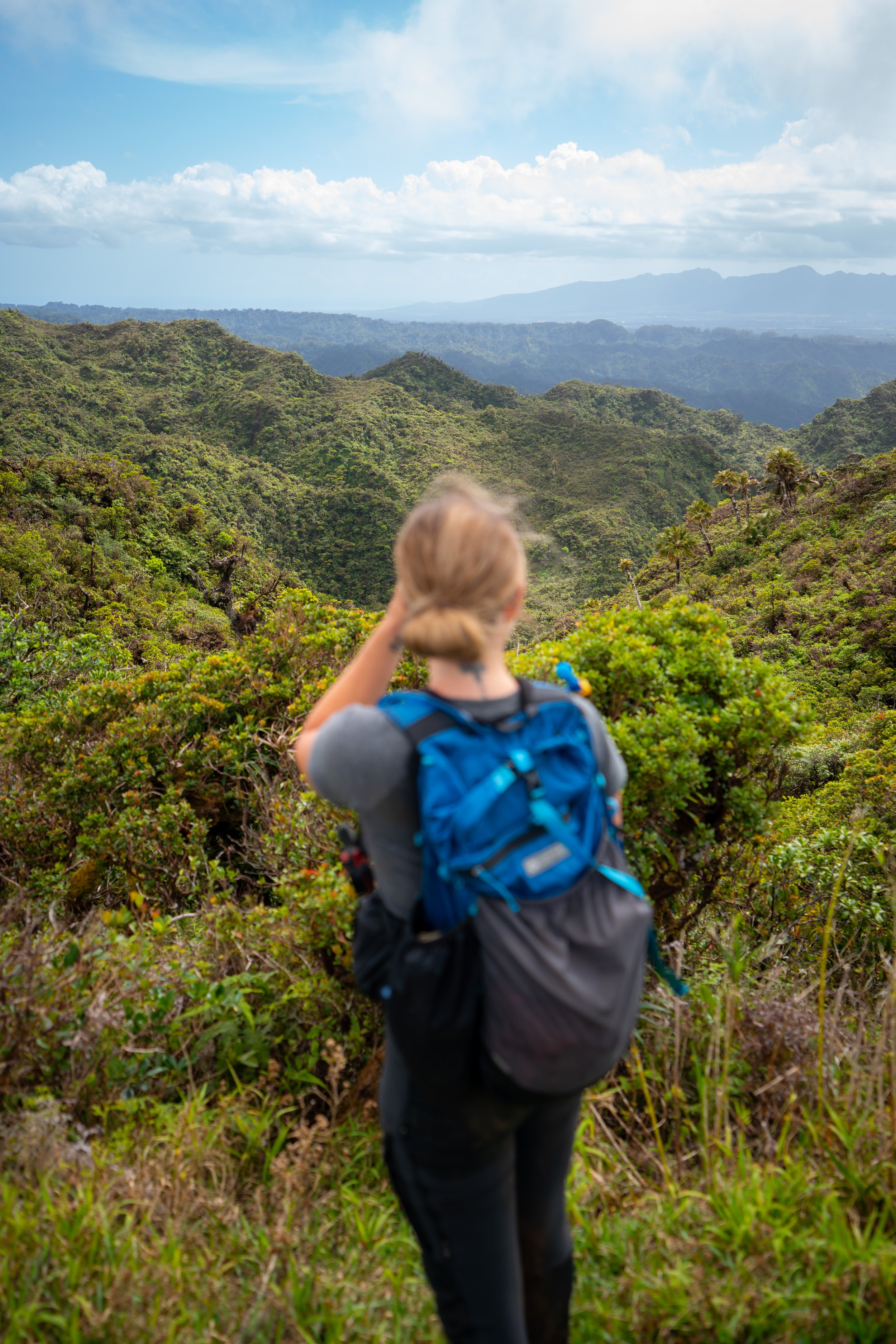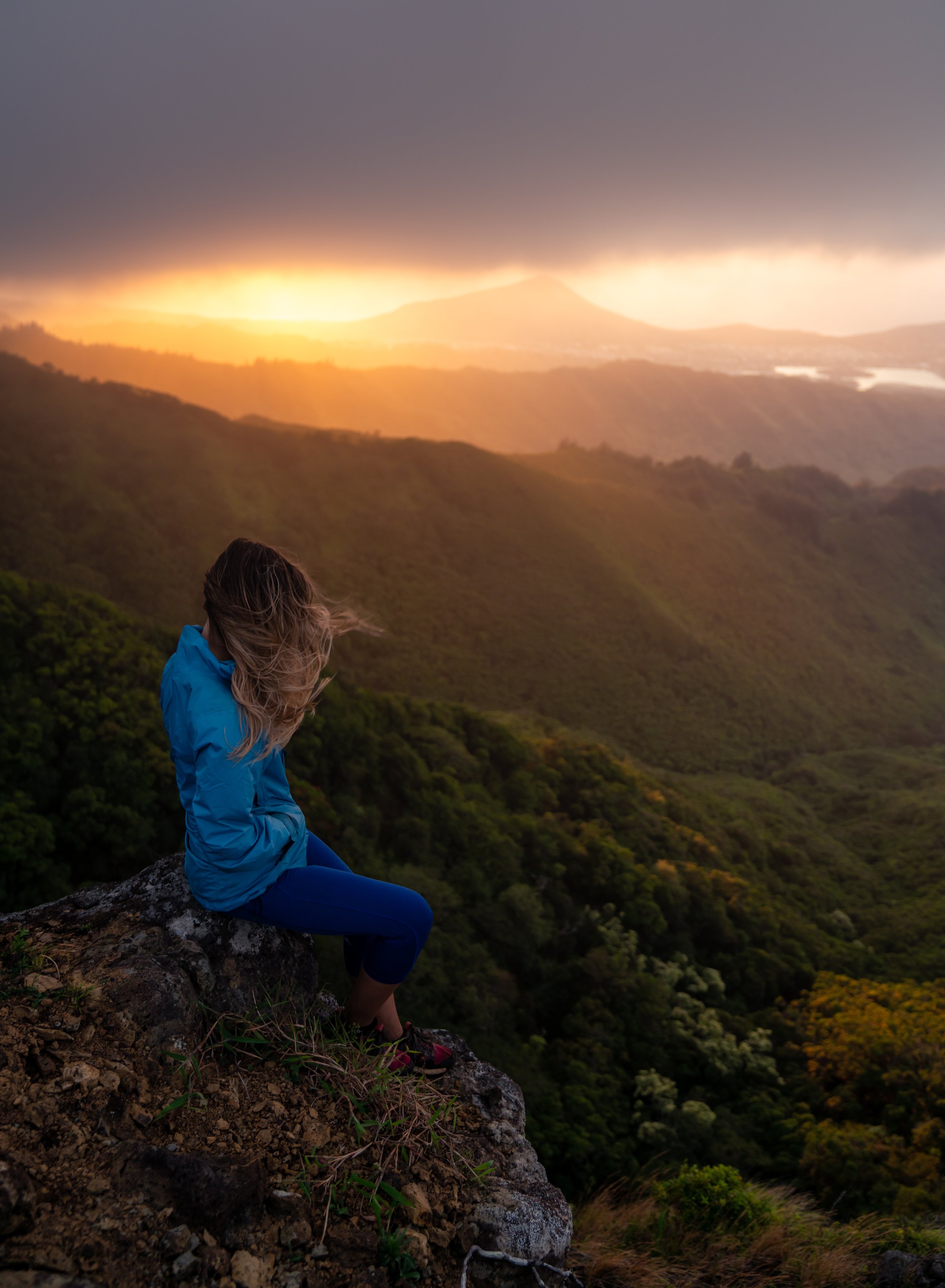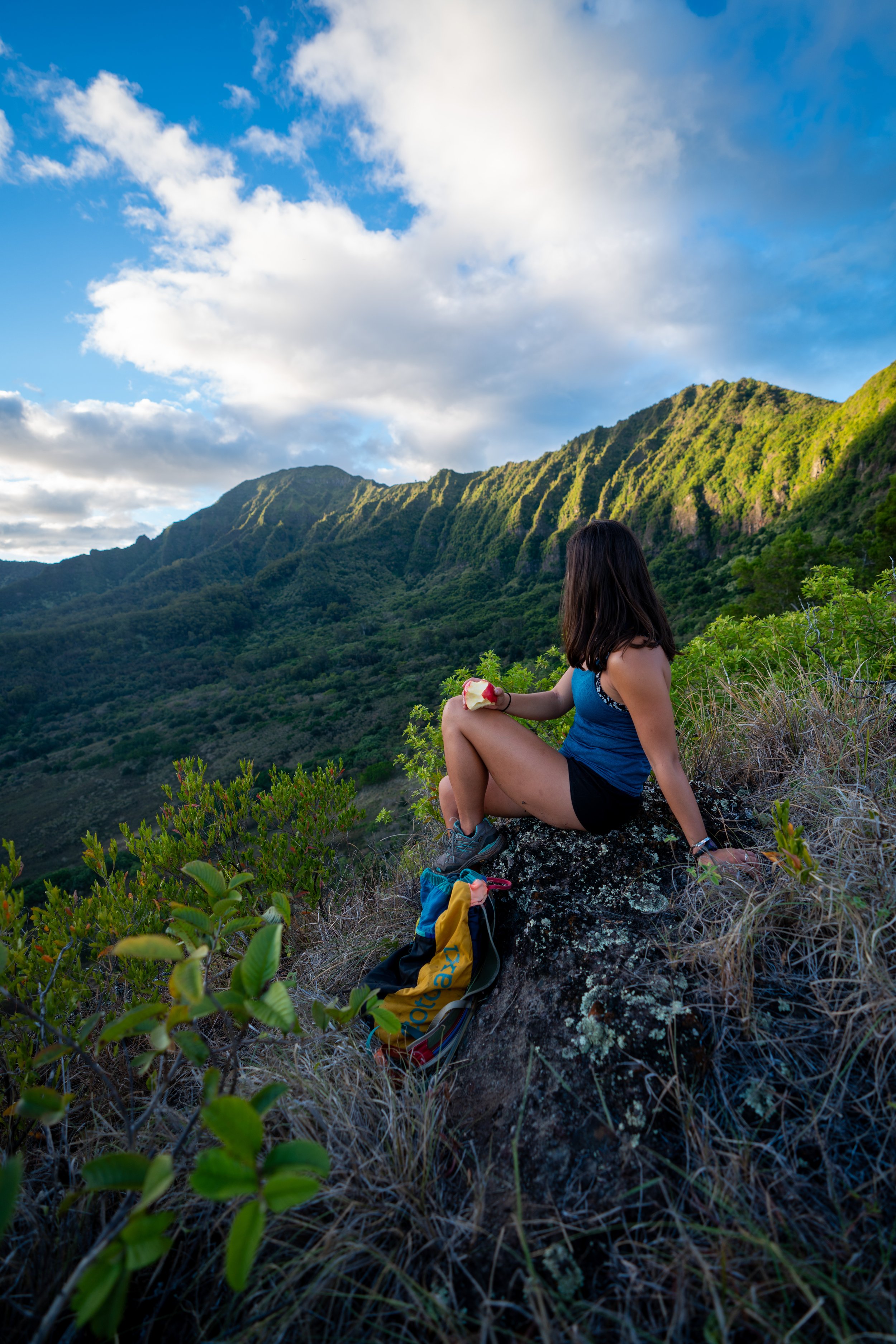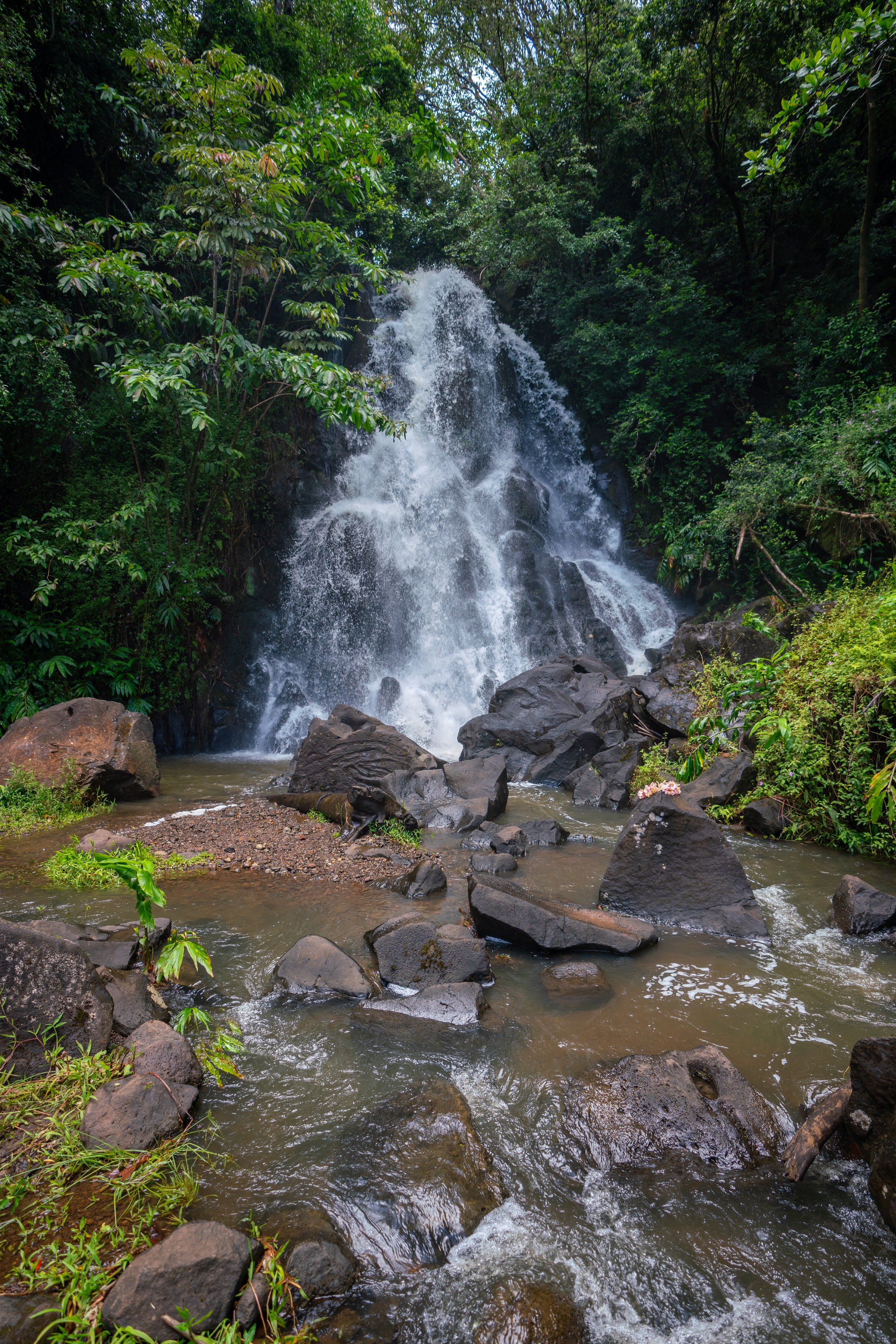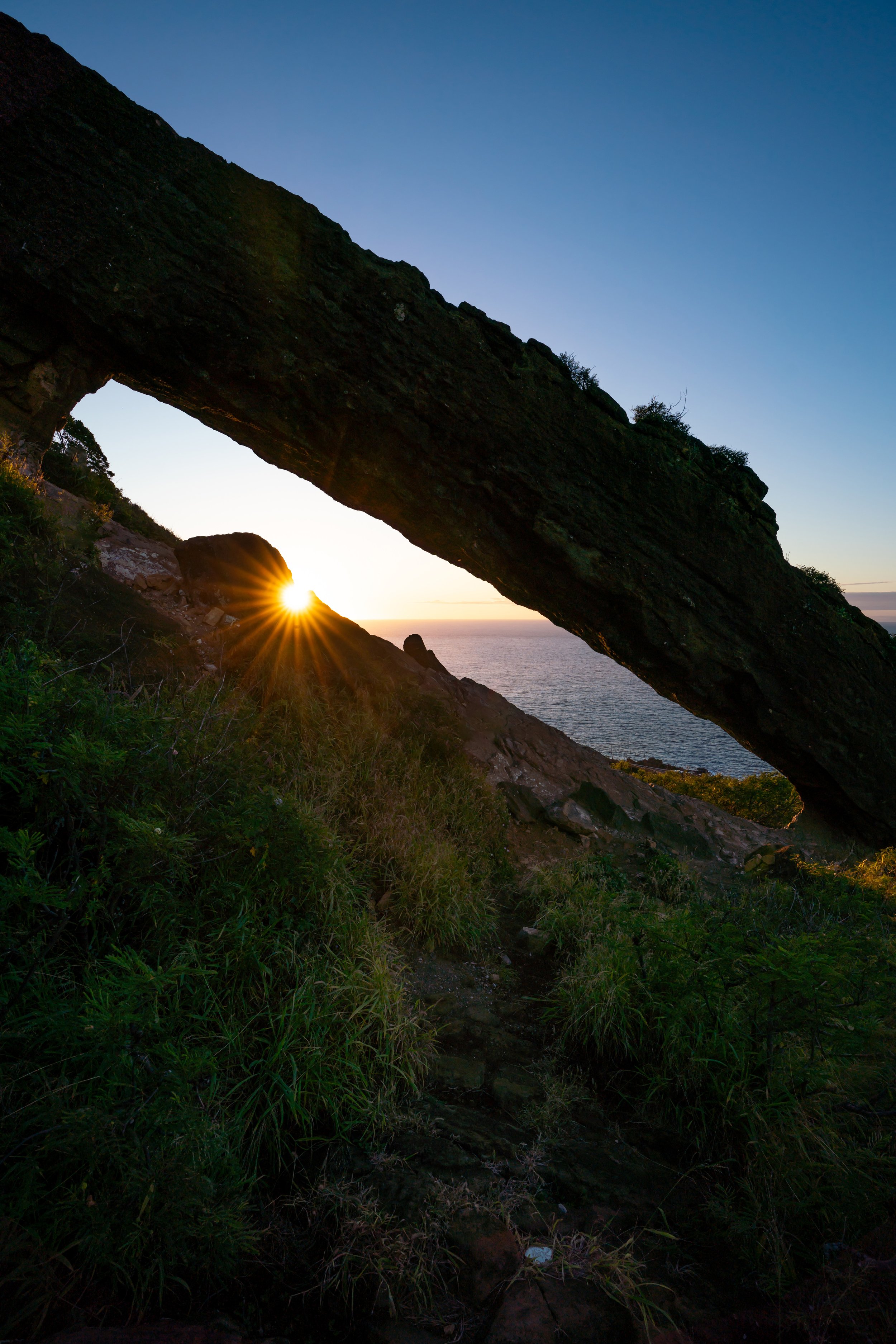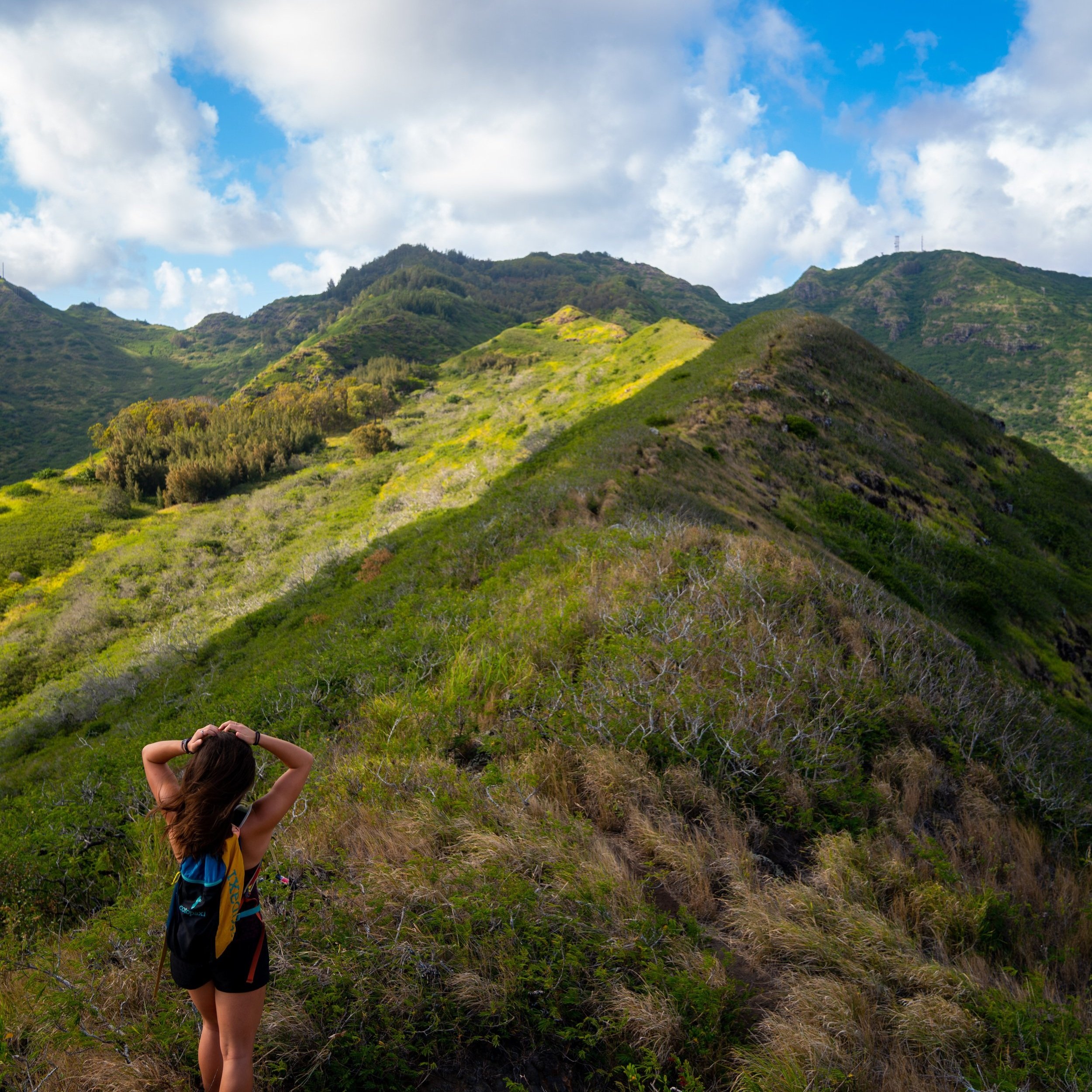Hiking the Kuliʻouʻou Valley Trail on Oʻahu, Hawaiʻi
Distance: 1.5 miles / 2.4 km
The Kuliʻouʻou Valley Trail on the southeast side of Oʻahu is often an overlooked adventure next to some of the island’s more popular day hikes—such as the Koko Crater Stairs, Hawaiʻi Loa Ridge, and even the nearby Pyramid Rock Loop. However, what it lacks in popularity, it makes up for in solitude.
By this, I mean that when both the Kuliʻouʻou Valley and Kuliʻouʻou Ridge Trail split, you’re very likely to be the only one on the trail.
In addition to this, the Kuliʻouʻou Valley Trail can make for a great, as well as short, Oʻahu trail run compared to some of my longer recommendations in my article linked below.
Read My Separate Post: Best Oʻahu Trail Runs
Kuliʻouʻou Valley Trailhead Parking
Parking for the Kuliʻouʻou Valley Trail is located at the very back of Kuliʻouʻou Valley, on Kālaʻau Place—the same trailhead as the much more popular Kuliʻouʻou Ridge Trail.
That said, parking on Kālaʻau Place has very limited space for both residents’ cars, as well as hikers all fighting for the same spots. For this reason, parking is one of the biggest reasons that I recommend starting early—especially on weekends!
Google Maps Directions: Kuliʻouʻou Valley Trailhead
Hiking the Kuliʻouʻou Valley Trail
The Kuliʻouʻou Valley Trail begins at the same trailhead at the end of Kālaʻau Place as the much more popular day hike up Kuliʻouʻou Ridge.
Kuliʻouʻou-Puʻu ʻO Kona Junction
After a short distance, go right at this split to leave the service road and begin the Kuliʻouʻou Ridge/ Valley Trail, which will follow the same path for the first 0.25 miles (0.4 km).
On a different note, the service road that continues to the left is the route for the Puʻu ʻO Kona Trail, but that’s a hike for another day.
Read My Separate Post: Puʻu ʻO Kona Trail
What’s Going on Here?
The vast majority of the lower elevations in Kuliʻouʻou Valley are dominated by non-native, invasive species, like Koa Haole, Logwood, and other grasses.
However, thanks to the amazing volunteer work by the state partnership with the Aloha Tree Alliance, the Kuliʻouʻou Ridge and Valley Trails are being reforested with native Hawaiian plants—species that have historically thrived in Kuliʻouʻou, like ʻAʻaliʻi, ʻIlieʻe, Wiliwili, Kou, among many others.
If you’d like to donate to the efforts or even volunteer, all the information can be found on their website linked below.
Donate & Volunteer: Aloha Tree Alliance
Kuliʻouʻou Valley-Kuliʻouʻou Ridge Junction
After 0.25 miles (0.4 km), the Kuliʻouʻou Valley Trail splits with the Kuliʻouʻou Ridge Trail; the more popular of the two day hikes.
For this reason, the next 0.5 miles (0.8 km) up the Kuliʻouʻou Valley Trail become much less trafficked, and it’s very likely that your group will be the only one on the trail.
Read My Separate Post: Kuliʻouʻou Ridge Trail
In my experience, the most 'challenging' part of the Kuliʻouʻou Valley Trail is the mosquitoes.
To this point, mosquitoes on dry-forest hikes, such as this, have always been more of an issue here than on tropical wet forest hikes.
Therefore, unless you’re trail running, I highly recommend wearing hiking pants on the hike, which will be just as useful on more overgrown/ more difficult trails beyond Kuliʻouʻou Valley.
The pants below are my recommendations that hold up the best with the overgrowth here in Hawaiʻi, but with any hiking pants that need to be durable, make sure that they are at or near 100% nylon. This is really the most important factor!
As the trail makes it’s way deeper into Kuliʻouʻou Valley, the path simply contours the east side of the Kuliʻouʻou Stream until the end of the trail.
I had to help Eleanor, my little miniature dachshund, up and down these small rocky sections.
Kuliʻouʻou Stream
After 0.5 miles (0.8 km), the Kuliʻouʻou Valley Trail meets the Kuliʻouʻou Stream, which is the end of the maintained trail.
Warning
For some, the Kuliʻouʻou Valley Trail is simply an access trail to the many waterfalls that can be found further up the stream.
However, I caution against hiking up Kuliʻouʻou Stream to try and find these waterfalls, as the valley poses one of the biggest risks for flash flooding on Oʻahu.
On top of this, Kuliʻouʻou Stream will almost always be dry until it has recently or is actively raining. Therefore, periods of wet weather, like this, are exactly when you wouldn’t want to be caught anywhere near Kuliʻouʻou Stream in the event of a flash flood.
All said, there are other—not to mention better—waterfall hikes on the island that can and should be hiked during clear weather, such as Kōloa Gulch.
Read My Separate Post: Kōloa Gulch Trail
Native Plants on the Kuliʻouʻou Valley Trail
Since the Kuliʻouʻou Valley Trail remains at fairly low elevations for the entire hike, native plants are few and far between—outside of the amazing volunteer-led restoration work that has taken place on the trail.
It is because of this work that you can see native plants, such as ʻIlieʻe, Alaheʻe, Pōhinahina, Wiliwili, ʻŪlei, and Milo, to truly only name a few.
If you would like to learn more about these and tons of other native Hawaiian plants from across the islands, I encourage you to read more in my separate article linked below.
Read My Separate Post: Native Hawaiian Plant Guide




